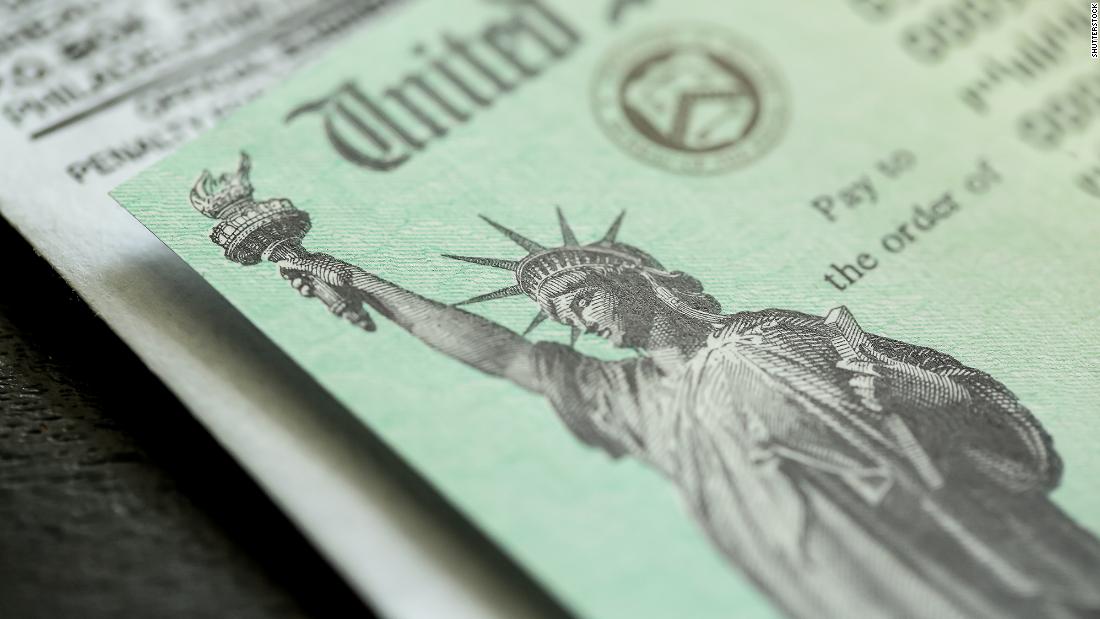Individuals who earn less than $ 75,000 will receive a total of $ 1,400. Couples earning less than $ 150,000 a year will receive $ 2,800 – and families with children are entitled to an additional $ 1,400 per dependent. Householders who earn less than $ 112,500 a year will also receive a total of $ 1,400 plus another $ 1,400 per dependent.
Income limits will be based on the most recent taxpayer statement. If they have already submitted a 2020 return at the time the payment is sent, the IRS will base the eligibility on their 2020 adjusted gross income. Otherwise, it will be based on the 2019 statement or information submitted through a portal. created last year for people who do not usually file an income tax return.
If you are unemployed
The unemployed will receive a federal increase of $ 300 per week for unemployment benefits and will receive these payments until September 6. In addition, two major pandemic unemployment benefit programs will be extended for the same period.
The bill also provides for the first $ 10,200 of unemployment payments to be tax-free for families with an annual income below $ 150,000.
Freelancers, gig workers, independent contractors and certain people affected by the pandemic can receive benefits through the Pandemic Unemployment Assistance program, while the Pandemic Emergency Unemployment Compensation program increases the duration of payments for those in the state’s traditional unemployment system.
The $ 300 increase that was part of the December deal also ends this weekend.
If you are hungry
Food stamp recipients will see a 15% increase in benefits through September, instead of expiring at the end of June.
If you are late in rent or mortgage
The project will send about $ 20 billion to state and local governments to help low-income families cover overdue rent, rental assistance and utility bills.
It authorizes about $ 10 billion to help struggling homeowners pay their mortgages, utilities and property taxes.
The project also offers $ 5 billion to help states and localities assist those at risk of homelessness, offering safe and socially distant housing, for example. Another $ 5 billion goes to emergency housing vouchers for homeless people.
If you have children
Many families with young children will be able to claim a larger child tax credit for 2021. Low-income parents, in particular, would benefit.
Qualifying families can receive a child tax credit of $ 3,600 for each child under the age of 6 and $ 3,000 for each child under 18, from the current credit of up to $ 2,000 per child under the age of 17.
The extended portion of the credit will be available to single parents with an annual income of up to $ 75,000 and joint filers who earn up to $ 150,000 per year.
The tax credit will also become fully refundable so that more low-income parents can take advantage of it. In addition, families can receive monthly payments, instead of a lump sum once a year, which aims to facilitate the payment of their expenses.
Families paying for childcare services may receive additional help. The project will provide $ 39 billion to child care providers, some of which are to be used to help families struggling to pay the cost.
If you are sick
If you are sick, quarantined or caring for a sick loved one or child whose school is closed, bills can provide your employer with an incentive to offer paid sick leave and family leave.
Contrary to Biden’s initial proposal, the bill does not reinstate the mandatory paid family leave approved in an earlier Covid aid package. But it will continue to provide tax credits to employers who voluntarily choose to offer the benefit until October 1.
Last year, Congress guaranteed many workers two weeks’ pay if they hired Covid or were quarantined. It also provided an additional 10 weeks of paid family leave for those who were at home with children whose schools were closed. These benefits expired in December.
If you need health insurance
Subscribers will not pay more than 8.5% of their income for coverage, compared to almost 10% now. In addition, those who earn more than the current limit of 400% of the federal poverty level – about $ 51,000 for an individual and $ 104,800 for a family of four in 2021 – will qualify for help.
Low-income subscribers can have their premiums completely eliminated for two years, and those receiving unemployment insurance can apply for premium-free coverage in 2021.
In addition, dismissed workers who wish to remain on the employer’s health plan through COBRA will not pay any premiums from April until the end of September.
If you own a small business
The project provides $ 15 billion for the Emergency Injury Disaster Loan program, which offers low-interest, long-term loans from the Small Business Administration. The severely affected small businesses with less than 10 workers will have priority for part of the money.
It also provides $ 25 billion for a new concession program specifically for bars and restaurants. Qualifying companies can receive up to $ 10 million and can use the money for a variety of expenses, including payroll, mortgage and rent, utilities and food and beverage.
The Paycheck Protection Program, which is currently accepting second-round loan applications, would obtain an additional $ 7 billion and the accounts would make more nonprofits eligible.
Another $ 175 million would be used for outreach and promotion, creating a Community Navigator Program to help eligible companies.
Who’s out of luck?
Workers who receive wages equal to or slightly above the federal minimum wage of $ 7.25 an hour will not see an increase in pay.
